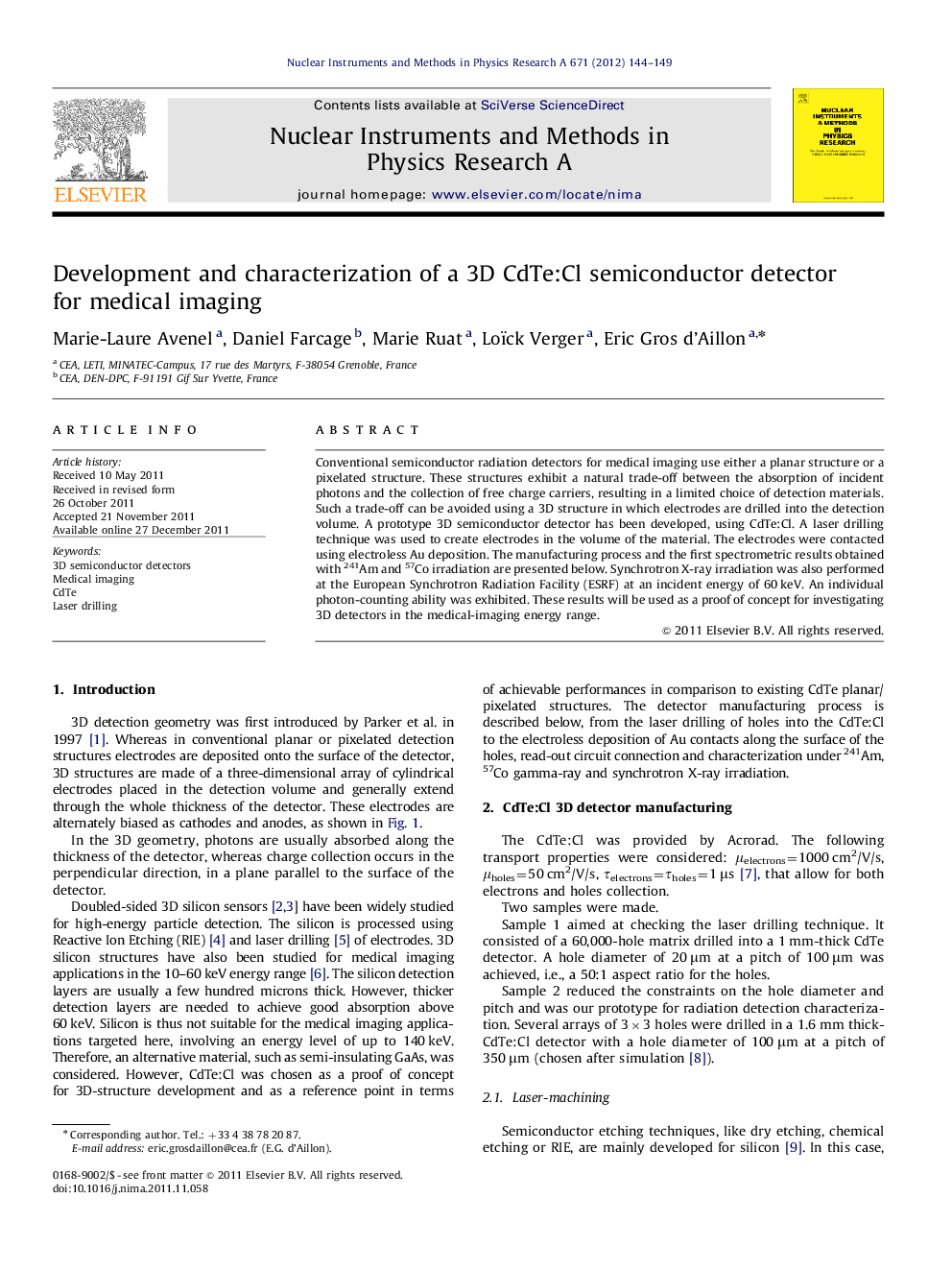| Article ID | Journal | Published Year | Pages | File Type |
|---|---|---|---|---|
| 1823892 | Nuclear Instruments and Methods in Physics Research Section A: Accelerators, Spectrometers, Detectors and Associated Equipment | 2012 | 6 Pages |
Conventional semiconductor radiation detectors for medical imaging use either a planar structure or a pixelated structure. These structures exhibit a natural trade-off between the absorption of incident photons and the collection of free charge carriers, resulting in a limited choice of detection materials. Such a trade-off can be avoided using a 3D structure in which electrodes are drilled into the detection volume. A prototype 3D semiconductor detector has been developed, using CdTe:Cl. A laser drilling technique was used to create electrodes in the volume of the material. The electrodes were contacted using electroless Au deposition. The manufacturing process and the first spectrometric results obtained with 241Am and 57Co irradiation are presented below. Synchrotron X-ray irradiation was also performed at the European Synchrotron Radiation Facility (ESRF) at an incident energy of 60 keV. An individual photon-counting ability was exhibited. These results will be used as a proof of concept for investigating 3D detectors in the medical-imaging energy range.
